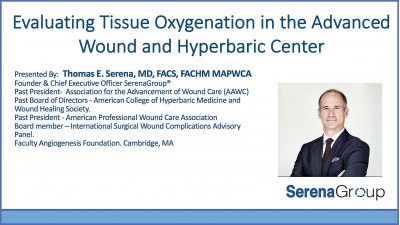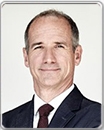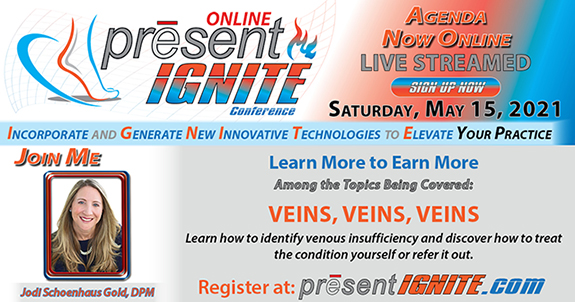
Practice Perfect 756
How to Study During Clerkships
How to Study During Clerkships

It’s April, and as the horrible COVID-19 situation appears to be stabilizing (hopefully continuing to resolve), it appears 4th year student clerkships are in full swing. This incredibly important aspect of our students’ education provides a multifaceted learning experience that is fundamental to modern podiatric education. This gives our students a chance to learn many methods to treat patients, practice clinical skills, meet new people around the country, and compete for future residency positions. It’s always struck me that there are no guidelines for how these clerkships are done, but that’s a conversation for another time.
What I would like to discuss today is the pitiful way our clerks study during their clinical education. I don’t mean to be overly critical (who are we kidding, of course I do!), but I’ve seen the same mistake made every month by almost every clerk rotating through my practice and residency for years. “What’s the mistake,” you ask? It’s simple: our students study randomly. Between clinic patients I see clerks dutifully studying – a good thing. I see them reading various study guides and manuals, all lovingly prepared by experts around the country. These manuals contain a plethora of important information and are excellent resources. The problem, though, is how our students use these resources. Instead of reading with a purpose, our clerks pick random subjects of personal interest that have no connection to what occurs during clinic, rounds, or surgery. This is what I consider random studying. And it’s the wrong way to study during clerkship.
Random studying is the wrong way to study during clerkship.
“Well then, smarty pants, what’s the best way to study during clerkship?” you ask. Thank you for asking!
The key is to link your experiences with your studying.
Sounds obvious, right? Duh. Well, students, if it’s so obvious why aren’t you doing it? Why do I see students studying about, say, lateral ankle instability when they just saw a patient with foot ulcers, a postop follow up visit, and a patient with heel pain during clinic? Studying about the pathology you see during your clinical encounters makes the pathology real (rather than hypothetical) and puts the all-important human aspect to that pathology. Linking today's patient encounter to the pathology makes the information stick.
Linking today's patient encounter experience to the pathology makes the information stick.
Here’s what our clerks should do on their clerkships to be successful and get the most of their opportunity:
- Study about what you see in clinic and surgery - Did you see a patient with plantar fasciitis? Go home and read everything you can about plantar fasciitis. You saw a patient with onychomycosis today? Did you read everything you could about onychomycosis? Diagnostic methods, treatment options, prescriptions, etc? You saw a patient with adult acquired flatfoot? Then you should be reading about this disorder today, including pathomechanics, nonsurgical and surgical treatments, epidemiology, etc.
- Read to prepare for upcoming experiences - Have a bunionectomy surgery coming up tomorrow? Read about the procedure and be ready to anticipate every step during the procedure. Know indications, methods, and potential complications. If you’re in clinic tomorrow, look at the schedule today and read about the patients and their pathology. Be prepared to help move that clinic by knowing what’s going on.
- Anticipate questions you might be asked or situations you might be in - If you’re going to participate in a surgery, then be ready to discuss important topics surrounding the procedure itself such as tourniquets, patient positioning, use of the C-arm, anesthetic injections, incisional approaches, suturing, and dressings. During rounds, anticipate questions related to postop care, infections, medical management of patients, etc.
- Take notes! - I can’t tell you how many times I’ve spoken to students or lectured about a topic and watch the student staring at me while I’m talking. Why aren’t you writing this stuff down? When you read something, take notes. You’re not going to remember everything you see, hear, or read. You’re definitely NOT an expert on this stuff yet! Carry some note-taking apparatus – book, notepad, smart device – whatever works for you. Whatever you use, take notes, and review those notes periodically. Add to those notes over time. Eventually you’ll have a comprehensive resource of your own that will be rapid, efficient, and complete.
- Follow up - There’s a 1,000% chance someone is going to ask you a question you can’t answer. When that happens, answer with, “I don’t know, but I’ll read about it and get back to you tomorrow.” Then actually go home and read about it. When the next day comes, take the initiative to walk up to the resident or attending that asked you the question and ask them if you can follow up on that question they asked. Don’t wait for them to come to you – go to them. But here is another secret: when you answer the question, there is a 99.9% chance they’re going to ask you another question about that same topic that you probably won’t be able to answer – unless you listened to my advice in #3 and anticipated future situations. While studying, think about what other questions or topics you could be asked. Maybe you’ll predict tomorrow’s question and you’ll be ready to actually correctly answer it.
- Know what to read to review the basics - This is a more challenging topic to cover because there’s A LOT to read and everyone has different priorities. For the basics on a topic, read your notes from school (yes, you’re paying a ton of money so you should have kept notes from your prior classes). McGlamry is an excellent resource with a comprehensive approach but is surgically oriented, so it won’t cover everything. You should be reading this on an ongoing basis (I read McGlamry 3 times during my training). Need an updated review on a topic? Go to Pubmed and look up the subject in question, limiting your search to review articles. This will cover the topic broadly and give you the background. When preparing for surgical cases, texts such as McGlamry or Chang are great places to start. Finally, looking at those residency prep manuals such as Prisma are good for this. Go directly to the section you need and read that. Don’t randomly peruse it unless you have nothing else to do.
- Know what to read to study the specifics - This one is harder yet because it takes more effort. Every topic in podiatry has classic articles and non-classic ones that are important. You MUST read these! And I mean really read them, not just the abstracts. A classic example in podiatry is the Ly and Coatzee study about surgical treatment for purely ligamentous Lisfranc injuries. Another example pertinent to the diabetic foot is almost anything written by Dr David Armstrong. For biomechanics, you can’t go wrong readying anything by Kevin Kirby or Doug Richie. How do you know what the important articles are? There are a few ways to figure this out. First, when you read review articles or textbook chapters, look at the works cited at the end. If you see articles mentioned in more than one paper or text, then it may be important. The introductions of articles also typically cite important or pivotal studies. Try to find articles yourself before asking others – it looks better. Second, ask your residents and attendings. I hesitate to say it because it seems so obvious, but if you clerk at a program, look up the articles written by the attendings before you go to the clerkship. Third, some residency programs keep lists of important articles. Ask for temporary access to this list and then read them. Fourth, work with other students around the country to create a bibliography resource that everyone can use. Take initiative and work together to end this ambiguous problem.
When you clerk at a program, look up the articles written by the attendings and be familiar with them before you go to the clerkship.
- Don’t forget about pathology seen less often - There are some pathologies not seen as often by some of us. For example, vertical talus is not terribly common, but you still have to know about it. Periodically go back and review those topics to maintain your knowledge base.
- Understand that this takes time - Last piece of advice. If you haven’t realized it yet, studying during clerkships takes time and effort. When I was a clerk, I studied on average at least 3 hours a night after clinics or surgery and often more whenever possible. To be honest, I understood the one-month-long-interview nature of clerkships and studied after hours until I couldn’t keep my eyes open. If you’re out partying and not studying your butt off during clerkship, then you’re doing it wrong – and you don’t deserve that residency spot.
Being a clerk isn’t easy. Being a good clerk is harder yet. Being an excellent clerk means having the entire package: hard work, excellent attitude, being a team player, good hand skills, and having a powerfully strong knowledge base. This last one requires the proper way to study during clerkships. Now that you have the key, use it. That part’s up to you.


































Comments
There are 0 comments for this article